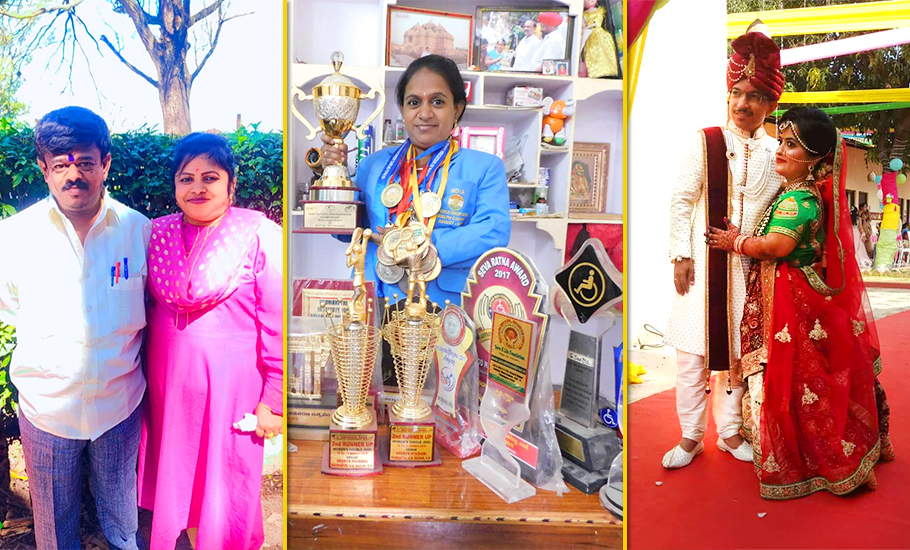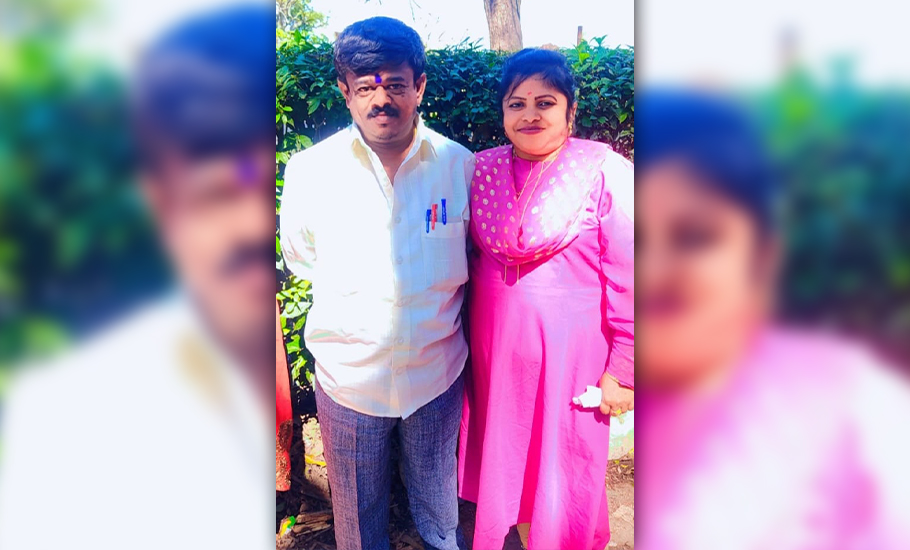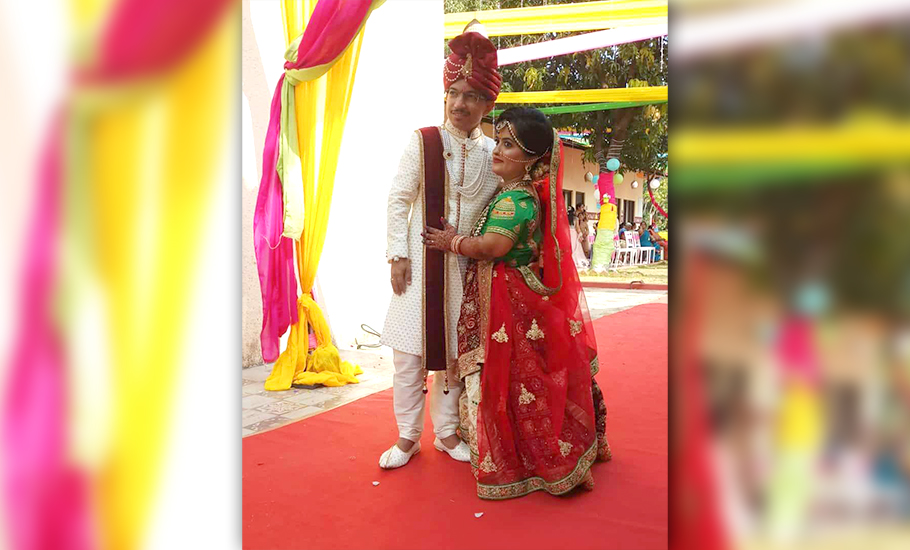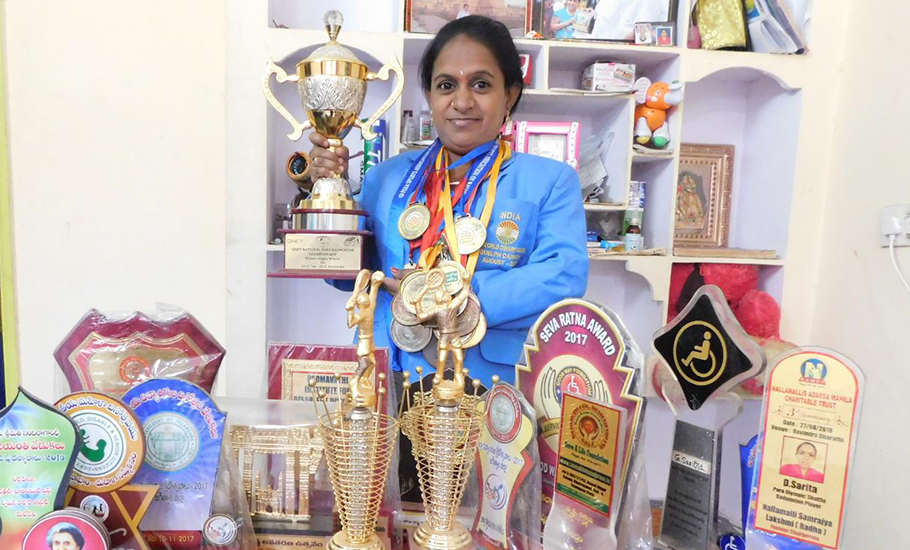
- Home
- News
- Analysis
- States
- Perspective
- Videos
- Education
- Entertainment
- Elections
- World Cup 2023
- Features
- Health
- Business
- Series
- Economy Series
- Earth Day
- Kashmir’s Frozen Turbulence
- India@75
- The legend of Ramjanmabhoomi
- Liberalisation@30
- How to tame a dragon
- Celebrating biodiversity
- Farm Matters
- 50 days of solitude
- Bringing Migrants Home
- Budget 2020
- Jharkhand Votes
- The Federal Investigates
- The Federal Impact
- Vanishing Sand
- Gandhi @ 150
- Andhra Today
- Field report
- Operation Gulmarg
- Pandemic @1 Mn in India
- The Federal Year-End
- The Zero Year
- Premium
- Science
- Brand studio
- Home
- NewsNews
- Analysis
- StatesStates
- PerspectivePerspective
- VideosVideos
- Entertainment
- ElectionsElections
- Sports
- Loading...
Sports - Features
- BusinessBusiness
- Premium
- Loading...
Premium

Love, marriage and motherhood: How 'little women' navigate biases and hurdles

Before Mumbai-based para-athlete and graphic designer Disha Pandya got married two years ago, she went through at least 25 rejections from prospective grooms, mainly because of her “short height”. Pandya, 38, was born with achondroplasia, a genetic disorder, which causes disproportionate dwarfism. She stands 4 feet 2 inches tall. “When it comes to love and marriage, it’s...
Before Mumbai-based para-athlete and graphic designer Disha Pandya got married two years ago, she went through at least 25 rejections from prospective grooms, mainly because of her “short height”.
Pandya, 38, was born with achondroplasia, a genetic disorder, which causes disproportionate dwarfism. She stands 4 feet 2 inches tall.
“When it comes to love and marriage, it’s riddled with heartbreaks and rejections for women with dwarfism. Even men with dwarfism don’t want to marry a woman with dwarfism,” Pandya tells The Federal.
She says women in her community face multi-layered discrimination in a patriarchal, and disabled-hostile society.
Mocked since her childhood for her height, she has come a long way. Pandya is the founding member of Little People of India, an organisation that supports people with dwarfism.
Denial of existence starts with data
The short-statured people got “official recognition of their existence” when dwarfism was listed as one of the 21 disabilities under the Rights of Persons With Disabilities Act, 2016 (RPWD Act). An adult person with a height between 2 feet 8 inches to 4 feet 8 inches is considered to be a person with dwarfism. Dwarfism is a medical or genetic condition, according to Little People of America, a support group for short-statured people in the US. According to doctors, one in one lakh people is born with dwarfism.
Also read | The women of Bengaluru slums who fought Covid and family’s hunger
India is home to around two lakh dwarf people, as per the Dwarf Federation of India, Bengaluru. However, there is no official data to confirm the exact strength of the community. The Census 2011 does not include specific data pertaining to the short-statured people. Thus, there is no clarity about literacy levels, employment rates, and the overall health and nutrition status of individuals with small stature.
Prior to the RPWD Act of 2016, dwarfism was clubbed under the category of locomotive disability. Around 20 per cent of people (out of the entire disabled population) have a locomotive disability.

The figures on persons with dwarfism will be clear once the pending decennial census is finished. “There is no official data related to the dwarf community. It is like erasing a whole group of people. If there are no figures, how could issues and problems pertaining to short-statured individuals be addressed?” asks Hyderabad-based disability rights activist M Srinivasulu.
“This clearly shows total neglect and apathy towards people with short stature by governments and our society,” rues Srinivasulu, who has a locomotor disability.
The neglect towards dwarf people extends to others with any kind of disability. Experts and activists working in the disability sector say every agency provides a different figure for the disabled population.
India is home to around 2 crore and 68 lakh persons with disabilities, as per the 2011 census. It means around 2.21 per cent of the Indian population has one or another disability. The male population with disabilities is around 2.41 per cent and the female population is 2.01 per cent. At least 42 per cent of disabled people never get married because of stereotypes associated with disability.

When it comes to literacy rate, women with disabilities are only 45 per cent and men with disabilities are 62 per cent. The difference in literacy figures is a critical indicator that gender determines a lot when it comes to access to education, which generally helps a person to get a job and achieve financial independence. Similarly, caste and class equally play a role in determining an individual’s social, political and economic inclusion.
Ignored by the state, scoffed by society
Srinivasulu tells The Federal love and marriage are distant dreams for women with dwarfism. “Marriage of women with disability is a big challenge. It becomes more difficult for short-statured women in a country where physical appearance usually takes precedence over other aspects when it comes to marriage.”
Srinivasulu, 52, who works extensively in the rural areas of Telangana and Andhra Pradesh, adds he has hardly come across any married dwarf women in the hinterland.
“Usually, a dwarf woman is single. They lead a lonely life. The discrimination against them starts at home since their early childhood, often. They are mostly scoffed at, harassed and ignored by society. They are forced to sit at home as physical movement becomes difficult. Their marginalisation is a combination of societal and government apathy.”
Rights activists say the situation can be changed by giving women access to education, skill development and healthcare facilities. “The focus should be on economic independence of women with disability,” opines Srinivasulu.
Also read | All-gender toilets bring freedom to Assam’s LGBTQIA+ people, unlock doors of acceptance
Unfortunately, that is not the case. Women with disabilities are excluded at the policy level. “They neither get benefits under disability or gender-specific programmes. In fact, in the four per cent reservation for persons with disabilities in education and employment, there is no provision for women with disabilities,” says Arman Ali, executive director of the National Centre for Promotion of Employment for Disabled People.
“There is also no commitment to ensure Universal Health Care and coverage, including disability-specific services and care, and health care needs of women and girls with disabilities.”
It has been found that physical violence and mental harassment are rampant against women with disabilities.
Nagaraja BG, a teacher from Tumkur, Karnataka, who is born with dwarfism and multiple disabilities, says the struggles of women with disabilities are compounded further as they have to fight gender biases. “I walk with a stick and need an attendant to venture outside. I struggle hard to board a bus to travel. These are our (people with disabilities) daily fights. Women with disabilities have to further endure patriarchal rules and regulations.”
From victimhood to victory
Some of these “invisible women”, who are often denied autonomy, respect, dignity and equality, have made it a point to make a mark for themselves.
Life was never easy for Mallika M, 33, from Karnataka. Growing up in Mallur village in Chikballapur district, going to school was a “difficult task” as most public spaces are inaccessible for disabled people. She, however, made it a point to finish her masters in political science from Bengaluru, Karnataka’s capital city.
“As a college student in Bengaluru, I went through a rough phase. Although nobody made fun of me, which is generally the case with short-statured people, I felt people were staring at me. My parents, friends and teachers supported me in completing my education,” Mallika, who stands 3 feet 8 inches tall, tells The Federal.
She adds it is the power of education which helped her get a job as a teacher and earn respect from all. These days Mallika is basking in happiness, as she got married three months ago to the “right person”. “It was an arranged marriage. My husband is also a dwarf. Our circumstances are the same. We understand each other’s strengths and weaknesses well. If this is not love, what is?” she asks.
Saritha Gudeti is also 33. Like Mallika, Gudeti grew up in a village. Recalling her childhood in Telangana’s Kothapet village Gudeti, born with dwarfism, tells The Federal she grew up listening to taunts. She was often equated with clowns from the circus because that is the only image one can conjure up in their mind for a vertically challenged person, thanks to cinema.
“We are treated as jokes to be laughed at and mocked. From jokes emerges the targeted harassment of people like us. Taunts are served to us as chocolates,” adds Gudeti, who stands 4 feet 2 inches tall.
Gudeti feels people with disabilities don’t need sympathy. “Give us the opportunities enjoyed by ‘normal people’ and we will show our capabilities.” The 33-year-old did show her potential, which is immense. Along with completing her graduation, it is in the sporting arena where she “sparkled like a star”. As a badminton player, she has won 12 gold, seven silver and six bronze medals in various para-athletics events.
Despite all her achievements, Gudeti, who now stays in Hyderabad, fought hard to get a job. After years of struggle, in 2021, she got a job. She works in the customer support department at Tech Mahindra. “I am educated and earned laurels for the country in badminton. All my applications for a government job were rejected. The big talk of affirmative action through the reservation to help the marginalised looks like a sham for me,” she adds.
Joy and journey of motherhood
Last November, Pandya gave birth to twins — a boy and a girl. It was her first pregnancy. Like any new mother, busy nurturing her babies, Pandya could not stop talking about the joys, new learnings and struggles associated with motherhood. However, Pandya’s experience of motherhood unlike “normal women” is different. She tells with a great sense of pride that she is “probably the first dwarf woman in India to give birth to twins”. But her struggles continue.
Gudeti is also a “new mother” like Pandya. The 33-year-old gave birth to her son in April. She also has a five-year-old daughter. Gudeti faced several pregnancy-related issues. “It was a cesarean delivery,” Gudeti says.
Dr N Sapna Lulla, a gynaecologist and an obstetrician from Bengaluru, tells The Federal short-statured women face difficulties in conceiving. “There are chances of miscarriage post-conception. Most of the gynaecological issues faced by vertically challenged women are due to smaller organs and lesser skeletal development. The affected organs adversely impact the body’s ability to absorb nutrients causing hypoxia issues in the placenta, low birth weights, and early preterm births.”
It has been observed that caesarean deliveries are common among short-statured women. While the fertility rate is low, they are prone to cardiac abnormalities, cardiomyopathy, coronary artery disease, pulmonary hypertension and respiratory problems during pregnancy.
Lulla advised mental health counselling for women with dwarfism before planning their pregnancies. “They are usually emotionally and psychologically vulnerable. They need counselling and family support throughout their pregnancy and post-childbirth.”
Dr Mythili Hazarika, associate professor of clinical psychology, Gauhati Medical College and Hospital, Guwahati, Assam, says both pre-marital or pre and post-pregnancy counselling for women with dwarfism should be encouraged but it is not mandatory. “Counselling sessions do help in understanding the personality and state of mind of a person. Such sessions help a woman to get an idea about the pros and cons of marriage and motherhood,” adds Harazika, who treats people with disabilities.
Dr Hazarika alerts that dwarfism does not mean a person will have mental health issues. “We need to know their self-esteem. If their identity formation is not haphazard then they will not have any problems. They are like any ‘regular people’. We need to know how they view themselves vis-à-vis others in physical form. Sometimes people with ‘normal health’ suffer from body dysmorphic disorder.”
A community of their own
In 2018, Pandya met her “mentor” Mark Dharmai — an international para-athlete — on a local Mumbai train. Dharmai, who is vertically challenged, introduced her to badminton. Playing badminton not only brought fame and medals to Pandya but she met many friends—who are also dwarfs. “It opened a new door to me. I was not friends with dwarf people earlier. Suddenly, I met and befriended at least 100 people who are all short-statured and have similar life experiences. That is how we thought of forming our community, Little People of India, inspired by Little People of America,” tells Pandya.

Technology came in handy to start the pan-India group. First, a WhatsApp group was formed. The group has a Facebook account. The website of Little People of India is non-functional currently because of the fund crunch.
Generally, members interact online as a physical meeting is not possible, always. “We do meet occasionally during sports events or inter-city meetings. The group was formed to share our thoughts and discuss issues affecting us. We have common concerns—like being bullied, denied jobs in the corporate sector or rejected by prospective partners. We share to unburden ourselves and find comfort among people encountering similar trials in life,” adds Pandya.
Little People of India has 400 members. Among them are many “successful women” who are doctors, lawyers, teachers and kathak dancers, to name a few. “They are professionally excelling but they don’t have partners. They are single because of their short height. People fear the genetic disorder will be passed on to the next generation,” says Pandya.
(The author is a Laadli Media Fellow, 2023. All the opinions and views expressed are those of the author. Laadli and UNFPA do not necessarily endorse the views).

